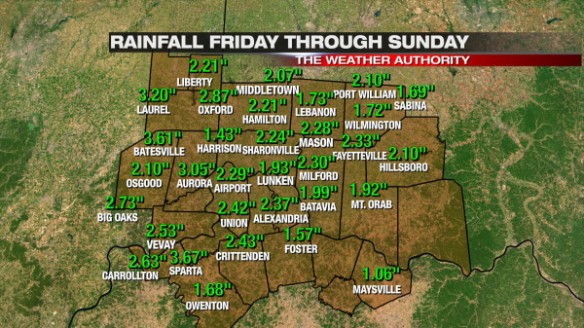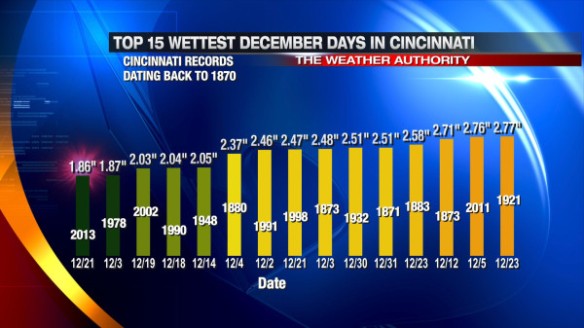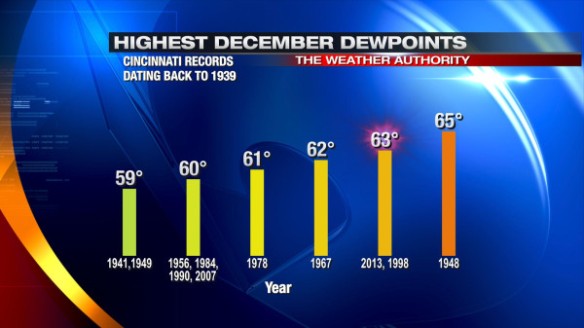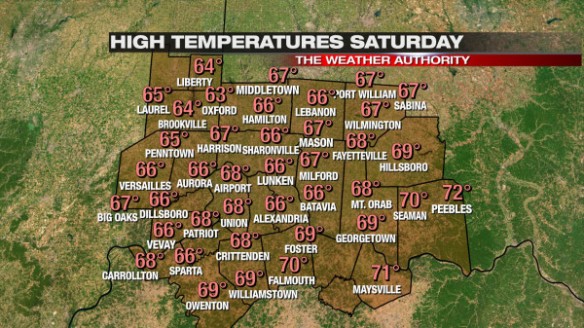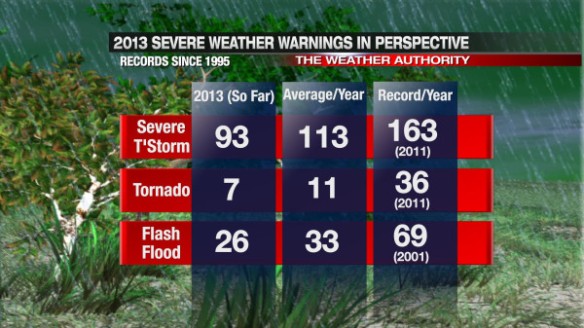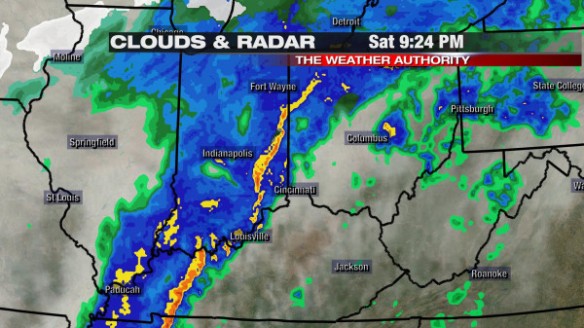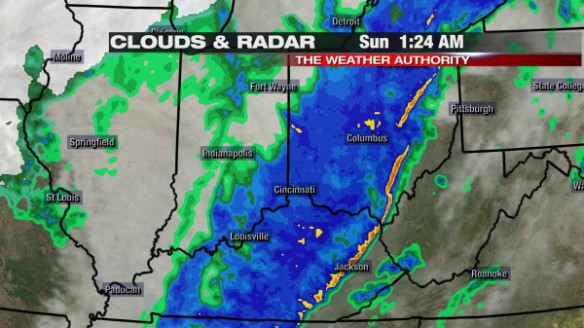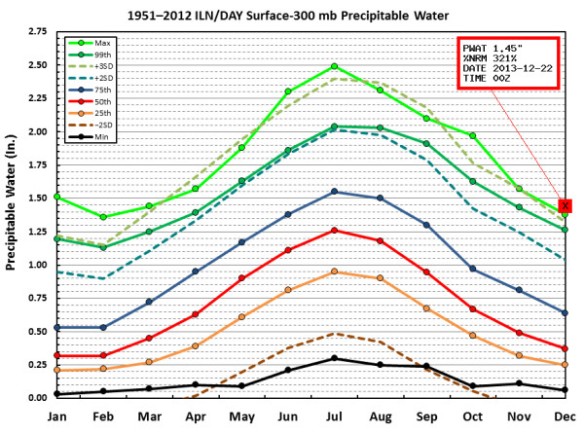Did Saturday’s weather seem unusual to you? It was. In fact, it was very unusual by several different measures. Heavy rain is not common in December, and severe weather isn’t either. We had plenty of both this weekend, fueled by an abundance of warmth and low-level moisture.
How does one measure the weirdness of weather? The easiest way to do this is by variable.
It was hard to ignore the rain this weekend, especially with Friday, Saturday, and Sunday being some of the biggest travel and shopping days of the year.
Rainfall totals varied from one community to the next, but most fell into a 1-3″ range; some were just outside the range:
While 1-3″ is a significant amount of rain, it doesn’t always lead to problems. For this event, however, it caused widespread flooding thanks to one of the snowiest starts to December on record and temperatures in the 40s, 50s, and 60s before, during, and after rain was falling. Tri-State soils were wet to soaked before rain fell in many communities, and 1-3″ of rain on top of a saturated ground means flooding is imminent.
The 2.29″ storm total at the International Airport is about 68% of the average amount of precipitation (rain + melted down snow and ice) Cincinnati gets in the entire month of December. 1.86″ of that total fell between midnight Saturday and midnight Sunday, making Saturday, December 21st the 15th wettest December day on record (since 1870) in the Queen City:
A surplus of low-level moisture and a surge in warmth helped to support the widespread rain and storms that passed through the Tri-State Friday, Saturday, and Sunday. Since reliable hourly weather records began in Cincinnati in 1939, the highest dewpoint recorded in Cincinnati during the month of December was 65°. At the Cincinnati/Northern Kentucky International Airport, the dewpoint hit 63° several times Saturday. A dewpoint of 63° is abnormally high for Cincinnati in December and almost tied the dewpoint “record” set in 1948:
Temperatures were also well above average, helping to create some instability. Our high of 68° was 1° from matching the record high of 69° set in 1967. Here’s a map of Tri-State high temperatures Saturday:
Oddly enough, the weather setup in 1967 (when the record high was set) was similar to Saturday’s. After a dry morning and a rapid warm up from the 40s into the 60s on December 21, 1967, a cold front came through that unloaded 1.06″ of rain; the following day featured a low in the 20s, a high in the 40s, and some flurries in the morning. Similar to those days in 1967, we’ll start tomorrow around 30°, finish in the upper 30s, and have some flurries and sprinkles in the morning.
In my opinion, what make Saturday unique – or perhaps historic in some ways – was the presence of severe thunderstorms. From the time the National Weather Service Forecast Office in Wilmington first started issuing warnings for the Tri-State in 1995 to the start of this month, only 4 Severe Thunderstorm Warnings had been issued in the Tri-State during the month of December; all of them were issued on December 1, 2006 when a line of storms traversed the Ohio Valley. In this same time period, no Tornado Warnings and only 3 Flash Flood Warnings were issued in the Tri-State.
Last night, 8 Severe Thunderstorm Warnings, 6 Flash Flood Warnings, and a Tornado Warning were issued in the Tri-State. In other words, more Severe Thunderstorm, Tornado, and Flash Flood Warnings were issued in the Tri-State last tonight (both individually and added together) than in all December days from 1995 to 2012 combined.
After a very quiet spring and summer severe weather season, here are the latest warning totals for 2013 compared to the yearly records and averages:
Saturday’s severe weather event and the severe weather event that hit in the Tri-State on Halloween were unique in that damaging straight-line winds were caused more by showers than thunderstorms. Radar data showed a well-defined, narrow line of showers and isolated thunderstorms entering the Tri-State just before 9:30pm last night:
…and east of the Tri-State around 1:30am:
Showers and storms were moving quickly (50+ mph) last night, and their speed and outflow alone was enough to cause damage. In real-time, there was no strong indication that warnings were verifying. The peak wind gust map from last night (including observations from local airport and weather stations) suggests there was little to no damage (60+ mph winds are usually needed to cause damage):
When the sun came up and flooding concerns eased some overnight, people found more damage, but most that got damage just had trees or limbs down.
When you get off the beaten path, even more complex weather records were set on Saturday. The precipitable water (atmospheric water content) value measured by Saturday night’s weather balloon launched at the NWS Wilmington around 7pm set a December record (records began in 1948). In the graphic below, the green line represents the monthly records, and the “X” shows last night’s value broke the December record (and was 321% of the December average):
Regardless of how you measure Saturday’s weather, it’s hard to say it wasn’t unusual, atypical, or just plain weird. As a meteorologist who has worked for several years in the Ohio Valley, you never quite know exactly what you’ll see any given year. After a record number of tornadoes last year, this year has been quieter than usual and with nearly all of our severe weather coming late in the year.
Thankfully, the next few days look quiet with some bouts of flurries and near or below average warmth.

